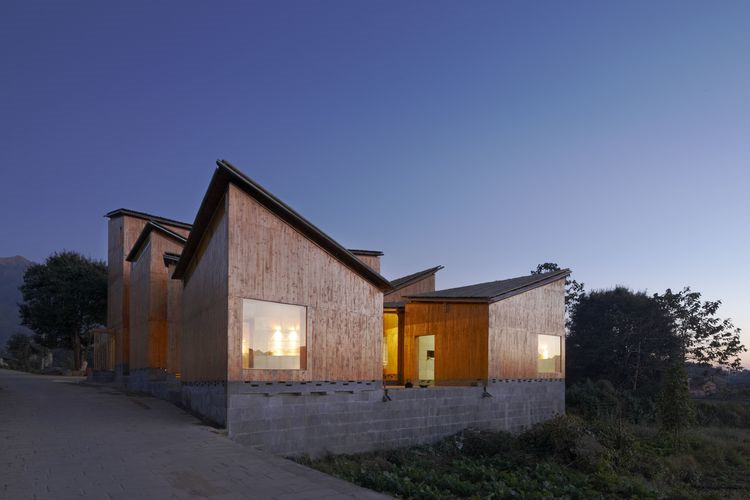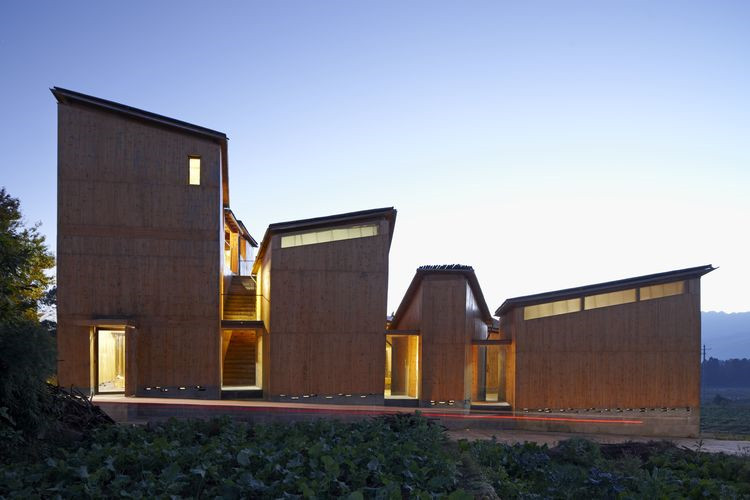Gaoligong Handmade Paper Museum in Tengchong County, Baoshan
Chinese Name:腾冲市高黎贡手工造纸博物馆
English Name: Gaoligong Handmade Paper Museum in Tengchong County, Baoshan
The Gaoligong Handmade Paper Museum (高黎贡手工造纸博物馆) is located in the Gaoligong Mountain National Nature Reserve (高黎贡山国家级自然保护区) on the southern slope, in Xinzhuang Village (新庄村), Tengchong County (腾冲县), Baoshan (保山市), Yunnan Province. This rural public museum is dedicated to showcasing and preserving the traditional methods of handmade paper production, a cultural heritage that has been passed down through generations.
Location
The museum is situated in the scenic area of Gaoligong Mountain (高黎贡山), within the Nujiang Grand Canyon (怒江大峡谷). This area is famous for its biodiversity and rich cultural traditions, with the museum located in a serene and picturesque field, near the foot of the mountain.
History and Development
The origins of handmade paper in Xinzhuang Village can be traced back to the Ming Dynasty (明朝), brought to the region by the Long family (龙姓) from Hunan Province (湖南省). The paper-making tradition became deeply ingrained in the village culture, and over the centuries, it has been passed down and refined through generations.
During the late Qing Dynasty (清朝) and the Republic of China (民国), the paper-making industry flourished, contributing significantly to the region’s cultural development. However, during the Cultural Revolution (文化大革命) and the rise of modern paper production methods, the traditional craft faced a decline. In recent years, the craft has been revitalized, especially after the Reform and Opening-up (改革开放), with a shift back to family-based production.
The Gaoligong Handmade Paper Museum was established to protect and promote this ancient craft. It aims to be a hub for the study, preservation, and development of local handmade paper traditions. The museum also fosters communication and exchange with the outside world, connecting local paper makers with global audiences.
Architecture and Layout
The Gaoligong Handmade Paper Museum is designed to reflect the spirit of the local village. The architecture consists of several small structures that are grouped together, resembling a miniature village. This design mirrors the spatial arrangement of Xinzhuang Village, where each household has historically produced paper and shared their craft with visitors.
Museum Layout:
-
The museum includes six uniquely designed exhibition halls, each dedicated to a different stage of the paper-making process. These halls surround a central courtyard, creating a continuous visitor experience.
-
The first floor features a tea room and office spaces, with a courtyard that can be fully opened to the outside, offering a scenic view of the surrounding countryside.
-
The second floor contains office areas, and the third floor includes guest rooms and a rooftop platform for enjoying views of Gaoligong Mountain.
The building uses local materials such as cedar wood, bamboo, and handmade paper to reduce environmental impact. The construction process incorporates traditional techniques and modern design, blending seamlessly with the local climate and culture. Local craftsmen played a key role in the building’s construction, ensuring that the museum itself is a testament to regional resource conservation and traditional craftsmanship.
Exhibitions and Visitor Experience
The museum’s exhibition areas cover various aspects of the handmade paper process. Visitors can explore the entire production method, from the collection of materials to the final creation of paper. The design of the museum encourages visitors to engage with both the exhibitions and the beautiful natural landscape surrounding the building. As visitors move through the exhibits, they experience a seamless interaction between indoor displays and outdoor views, emphasizing the connection between the craft of paper-making and the local environment.

Key Events and Activities
-
In 2006, the Traditional Resource Co-management Committee (传统资源共管会) was established in Xinzhuang Village to better manage and preserve local resources, including the paper-making tradition.
-
In 2007, the museum construction was initiated, with the site chosen and the foundation prepared.
-
The museum officially opened in 2012 after several years of planning and construction.
-
In 2010, the museum invited paper-making masters from Tengchong and Shangri-La to Beijing for a special exhibition, showcasing traditional paper-making techniques.
-
The museum regularly hosts workshops, exhibitions, and cultural exchange events, such as the “Handmade Paper Stories” event in 2010, focusing on the protection of intangible cultural heritage.
Cultural Significance and Outreach
The Gaoligong Handmade Paper Museum is not only a place for visitors to learn about the art of paper-making but also serves as a platform for the integration of traditional techniques with contemporary art and design. The museum has actively collaborated with modern artists and designers, promoting the use of handmade paper in contemporary creative fields.
Through its commitment to preserving the craft and fostering cultural exchange, the museum plays a vital role in keeping Tengchong’s (腾冲) rich cultural heritage alive, while also promoting the sustainable development of local traditions in the modern world.

 7 Days GolfingTour
7 Days GolfingTour
 8 Days Group Tour
8 Days Group Tour
 8 Days Yunnan Tour
8 Days Yunnan Tour
 7 Days Shangri La Hiking
7 Days Shangri La Hiking
 11 Days Yunnan Tour
11 Days Yunnan Tour
 6 Days Yuanyang Terraces
6 Days Yuanyang Terraces
 11 Days Yunnan Tour
11 Days Yunnan Tour
 8 Days South Yunnan
8 Days South Yunnan
 7 Days Tea Tour
7 Days Tea Tour
 8 Days Muslim Tour
8 Days Muslim Tour
 12 Days Self-Driving
12 Days Self-Driving
 4 Days Haba Climbing
4 Days Haba Climbing
 Tiger Leaping Gorge
Tiger Leaping Gorge
 Stone Forest
Stone Forest
 Yunnan-Tibet
Yunnan-Tibet
 Hani Rice Terraces
Hani Rice Terraces
 Kunming
Kunming
 Lijiang
Lijiang
 Shangri-la
Shangri-la
 Dali
Dali
 XishuangBanna
XishuangBanna
 Honghe
Honghe
 Kunming
Kunming
 Lijiang
Lijiang
 Shangri-la
Shangri-la
 Yuanyang Rice Terraces
Yuanyang Rice Terraces
 Nujiang
Nujiang
 XishuangBanna
XishuangBanna
 Spring City Golf
Spring City Golf
 Snow Mountain Golf
Snow Mountain Golf
 Stone Mountain Golf
Stone Mountain Golf














